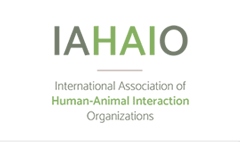Abstract
Autism spectrum disorder (ASD) is a developmental disorder characterized by differences in social functioning, communication, sensory preferences, and behavior. These differences invite an effort to understand the human-animal bond and its impact on families and children with ASD. The purpose of this study was to determine if the Observation of Human-Animal Interaction for Research (OHAIRE) coding tool can be utilized in a home-based setting to code human-animal interactions in children with ASD. The OHAIRE is a coding tool developed to quantify the behavior of children when interacting with social partners and animals in naturalistic settings. The tool has been tested for reliability and validity within structured, community-based settings; however, it has not been used in home-based settings. This study aimed to analyze the feasibility of utilizing the OHAIRE tool in home-based settings. The second aim was to determine if interrater and intrarater reliability could be reached between coders using data from the home-based videos. Nine minutes of video were obtained for the study. Participant-provided video was challenging to obtain and presented some coding challenges as quality differed from training videos. Participant training and incentives may increase usability of home-based video for coding interactions. Interrater reliability agreement was reached between primary and secondary coders ranging from .842 to .888. Intrarater reliability was met with substantial agreement to almost perfect agreement and ranged from .792 to .929. The OHAIRE coding tool is a promising measure of in-home human-animal interactions that may require adaptations for coding home-based interactions. Further research should include testing in home-based settings with larger and more diverse sample sizes.
Recommended Citation
Lisk, Caitlin and Mische Lawson, Lisa Ann
(2021)
"Coding Human-Animal Interactions in Homes of Children with Autism Spectrum Disorders,"
People and Animals: The International Journal of Research and Practice: Vol. 4
:
Iss.
1,
Article 9.
Available at:
https://docs.lib.purdue.edu/paij/vol4/iss1/9
Included in
Community-Based Research Commons, Development Studies Commons, Disability Studies Commons


